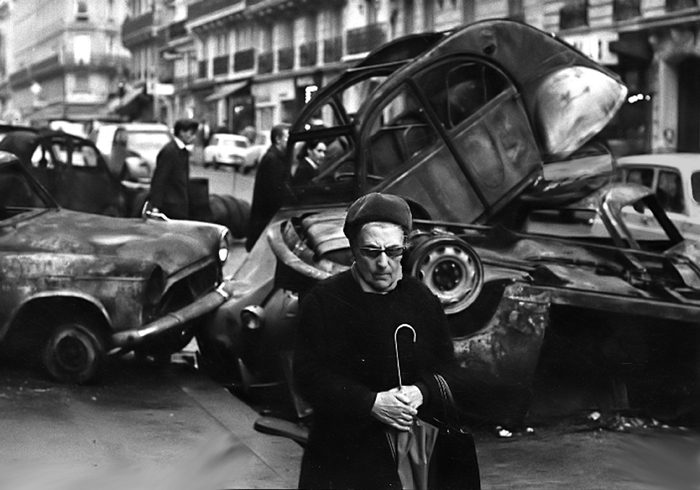The 50th anniversary of the fabled ‘events of 68’, hailed at the time as a turning point in world history, is receiving less attention in the mainstream media and popular culture than one might have expected; hoary jokes notwithstanding, it seems that you don’t actually need to have been there to have forgotten the 1960s. Whereas underground movements once had to define themselves against that decade’s countercultures in order to gain credibility – whether by negating the hippie ethos (punk) or by salvaging aspects of it (rave, grunge) – such references are no longer mandatory, or even necessarily legible to younger audiences.
This change likely signals the waning influence of a senescent boomer generation; it also suggests that the postmodern amnesia first diagnosed decades ago has been exacerbated by data overload, screen dependency and so-called fake news. Yet while it might well seem more important to shift our focus onto other, less mythified histories than 1968, this would only strengthen the reactionary forces that have long sought to contain or annihilate the emancipatory movements of that era. The question is thus not whether to remember 1968 but how. In what ways could we reject the sanctimony that so often distorts popular memory of that moment so as to grasp its present relevance? What strategies best enable us to understand the relationships between the art and politics of that period and those of today? And how might such constellations help those who wish to operate critically within the field of contemporary art?
In what ways could we reject the sanctimony that so often distorts popular memory of that moment so as to grasp its present relevance?
To avoid the constraints of nostalgia and presentism, it is important to debate this history in terms that are unfashionable or untimely – to recover, for instance, the habit of thinking dialectically. We need to remember that the expansion of individual freedoms that we typically associate with 1968 also facilitated the expansion of markets; that the convergence of art and life enabled the convergence of life and spectacle, as in the work of Joseph Beuys, Jean-Jacques Lebel or Andy Warhol; that the liberation of sexual desires exposed bodily life to new forms of domination; and that the pronounced leftward shift of much cultural production, including experimental or neo-avant-garde art, was in many ways a compensation for political and economic revolutions that seemed imminent but failed to occur.
We also have to bear in mind that terms like ‘the 1960s’ and ‘1968’ don’t typically refer to chronological dates, discrete events, historical periods or specific critical concepts. Rather, they function as floating signifiers: their meanings shift and proliferate, often imperceptibly, such that two people can use the same term to mean contradictory things. Over and against the utopianism of the 1960s, 1968 represents a much more ambivalent entanglement of emancipation with crisis, antagonism, failure, violence and contradiction. It also speaks to a historical horizon that extends well beyond the North, a subject that has recently been receiving belated (but welcome) attention in academic studies of ‘the global 1968’.
One apt way to register these complications would be to think of 1968 as a conjuncture – a concept developed by Louis Althusser, many of whose students were central to les événements de mai. For the Marxist philosopher, whose own response to the uprisings in Paris was largely sceptical, the term denotes a historically particular, intrinsically dialectical relationship between structure and contingency. Culture cannot be disaggregated from political economy, and every individual action must be thought in relation to the contradictions that serve as its conditions of possibility. These ideas were incisively developed in Fredric Jameson’s landmark essay ‘Periodizing the 60s’ (1984), which argued that the emancipatory movements of that moment – the decolonial revolutions of the Third World, the formation of New Left coalitions and the rights struggles of African Americans, women and other subjugated populations – must be thought in conjunction with the contemporaneous global expansion of capital, whether through the growth of international markets or the industrialisation of agrarian economies.
Over and against the utopianism of the 1960s, 1968 represents a much more ambivalent entanglement of emancipation with crisis, antagonism, failure, violence and contradiction
On this view, the 1960s did not end with the Manson murders or with Soviet tanks in Prague; they ended in the global economic crisis of 1973–74, after the last remaining vestiges of the preindustrial world had been enclosed. Jameson’s thesis – that the achievements of new social and political movements are inextricable from the ‘liberation’ of vast new territories for the purposes of private profit – is both sobering and deeply discomfiting; even those of us who didn’t live through the 1960s don’t want to believe it.
Yet rather than succumb to left melancholy, we would do well to recall that art can think dialectically too, and in ways that can thwart the expectations we inherit from theory. This largely means bypassing the sort of work commonly associated with 1968: the slogans of the Situationist International and the posters of the Atelier Populaire; Christo and Jean-Claude’s oil-barrel barricades; anything Op or Pop or psychedelic; the often self-serving theatrics of artists like Lebel and Beuys. Instead, we need to attend to art that was (and is) uncompromising about its own compromises; art that committed to radicalism or even a kind of extremism without fetishising transcendence or wishing away its own inevitable ambivalence; a riven, dogged art that didn’t just acknowledge its own unfreedom but openly struggled against it.
The most indelible example of such work remains Chris Marker’s A Grin Without a Cat (1977). Combining an unsparing analysis of the repression of the global New Left, a keening lament for the destruction of emancipatory movements and a self-reflexive inquiry into militant aesthetics, the film functions as an autopsy, a requiem and a call to arms. Integral to its power is what Marker calls the ‘trembling image’: a term that refers to the shakiness of handheld protest recordings, and by extension to images marked by an exposure to contingency and potential injury.
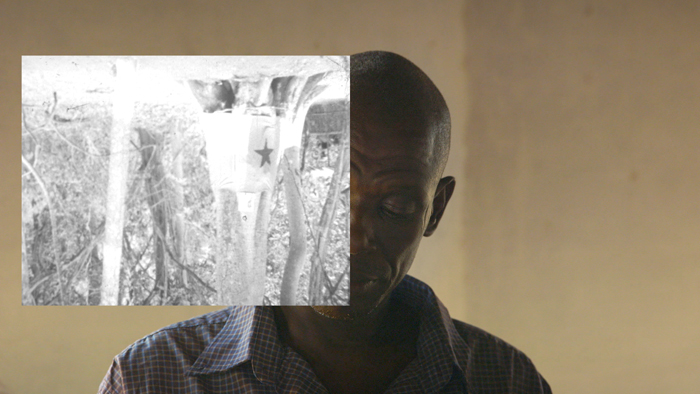
Contemporary practitioners could realise the potential of this precedent by thinking the trembling image more expansively – not just by transposing Marker’s concept into other formats, but by tracing the ‘trembling’ or resonance between the antagonisms of a given conjuncture and the vulnerability of those who struggle within it. Among the artists to have taken on his legacy, despite coming of age long after 1968, is the Portuguese filmmaker Filipa César. A decade ago she was introduced by Marker to Sana na N’Hada, Flora Gomes and several other revolutionary filmmakers from Guinea-Bissau who had shot hundreds of hours of documentary footage during its war of independence (1963– 74) and the following years of decolonisation. In the intervening years César has worked to help restore and digitise this footage, much of which was never screened for political reasons; she has also used it as material for projects across multiple media, most recently Spell Reel (2017), a feature-length film that perceptively gauges the relation between the unfulfilled potential of that moment and the possibilities of the present.
Art historians might also venture to rethink canonical works of critical art in terms of their contradictions: one example could be VALIE EXPORT’s TAP and TOUCH Cinema (1968), which is typically read as a feminist reversal of mainstream cinema’s gendered power relations, but which centres problematically around EXPORT’s voluntary objectification of her own body and image. The same analysis might be applied to those cases in which artists incorporated signs of domination directly into their work so as to make repression into a kind of ‘medium’. One thinks here of Melvin Edwards’s series Lynch Fragments, begun in 1963, or Artur Barrio’s ‘Bloody Bundles’ (1969–70); neither of these artists has the left-canonical status of Marker and EXPORT.
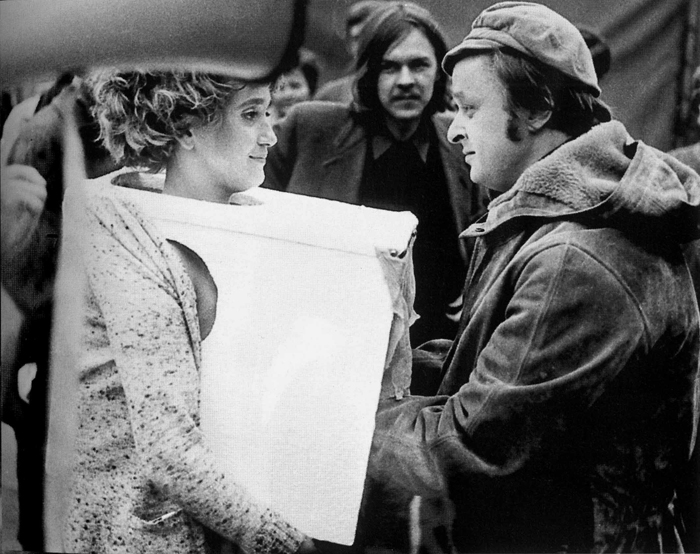
That works like these feel relevant today, in ways that others from that moment do not, has little to do with their formal innovation or stylistic prescience. More important is their highly attuned relationship to their own conditions of possibility and, crucially, impossibility. As much as we might want to follow many feminist art-historians in claiming EXPORT’s TAP and TOUCH Cinema as a heroic victory over patriarchy, this would amount to a kind of wish fulfilment. In reality, the performance marks the limits of such actions, which can function radically as representations but are incapable, like all art, of altering power relations at a more structural level. It is this ambivalence that continues to link the work of artists such as EXPORT to the profound contradictions that characterised 1968.
Art like EXPORT’s retains its sense of urgency because those contradictions are still largely with us, which is to say that 1968 can be viewed as the threshold of the global geopolitical order typically described as ‘contemporary’. That said, our current conjuncture has also been determined by major developments that no one could have foreseen, whether in 1968 or 1984: the disintegration of the Soviet bloc in 1991; the outbreak of a third industrial revolution, encompassing biotechnology, mobile computing, automated production and seemingly universal informatisation; the emergent hegemony of global neoliberalism; and the increasingly irreversible planetary climate crisis. These interlinking but distinct processes are frequently conflated under the facile rubric of ‘the global contemporary’ – a seemingly neutral but in fact highly ideological term that often serves to naturalise conditions of inequality or exploitation.
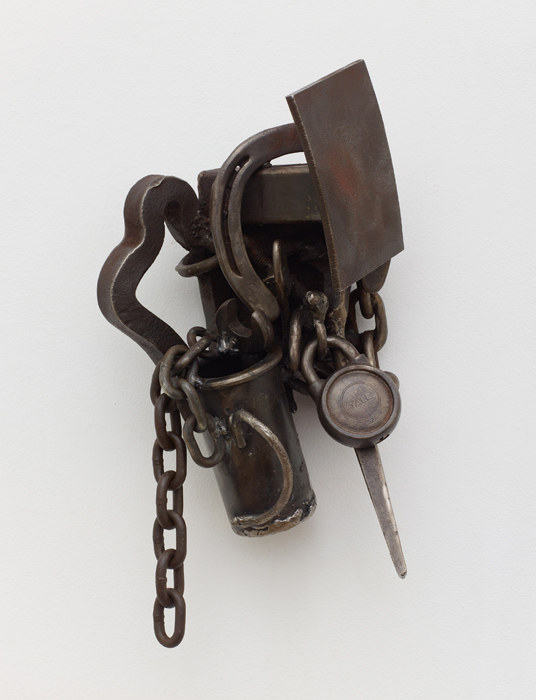
It is therefore important to identify, analyse and reframe these relations, enabling specific subjects – especially non-elite audiences – to recognise themselves as agents capable of collectively altering these conditions. The world can do without pious, crypto-Maoist soixante-huitard homilies demanding our fidelity to the ‘events of 68’; we need clearer diagrams and sharper tools, we need voices that are brave, humble, indefatigable. Such work is already under way, due in part to the foresight of those who eschewed the antiestablishment orthodoxy of their moment to undertake the more painstaking labour of rebuilding institutions over decades.
One site for such work has been the research exhibition, a format combining experimental art and exhibition design with academic and critical investigation. These projects have often been underwritten by progressive European institutions – a fact that speaks to the surpluses accumulated by creditor states like Germany, and also to the need to offset ensuing tensions through acts of preemptive cultural diplomacy. Among the most ambitious and generative of these has been Former West (2008–16), a multiyear research, education, publishing and exhibition project organised by Utrecht-based BAK (Basis voor Actuele Kunst), which aimed to radically reorder conventional art-historical narratives by provincialising and historicising the notion of ‘West’. Such objectives meshed productively with longstanding attempts across the global South to decolonise art history and theory.
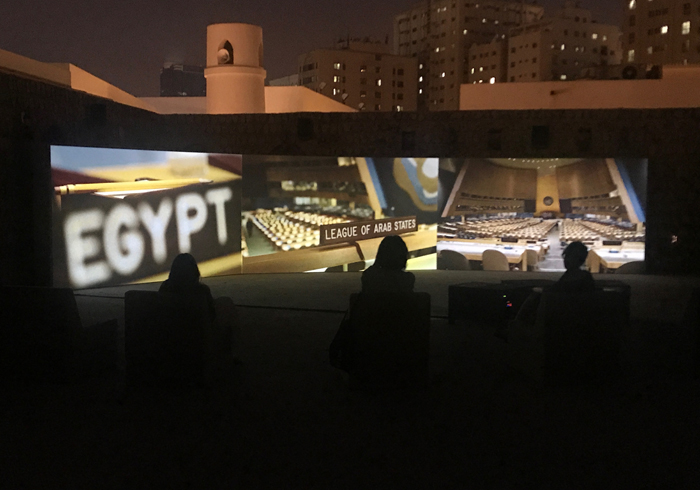
Another instructive example has been the wide-ranging programming at the Haus der Kulturen der Welt in Berlin, which has addressed some of the most crucial aspects of the histories that follow from 1968: the ascendancy of digital capitalism and the California ideology (The Whole Earth, 2013); the legacies of transnational left solidarity projects like the Non-Aligned Movement (After Year Zero, 2013); the nexus between aesthetics, media and nongovernmental activism (Forensis, 2014); the geopolitics of the Cold War (Parapolitics, 2017); and the genealogy of our planetary ecological crisis (The Anthropocene Project, 2013–). The fact that such initiatives are often dismissed as didactic or insufficiently ‘aesthetic’ only suggests the extent to which the liberal anticommunist ideology of Greenbergian Modernism continues to condition current critical discourse.
Such examples make clear that one does not need to have ‘been there’ to engage with the complex afterlives of 1968. Like César, Naeem Mohaiemen has undertaken meticulous research into the histories of the transnational left in his multipart project The Young Man Was (2012–). His recent essayistic video installation Two Meetings and a Funeral (2017) reads in many ways as a critical rejoinder to Marker’s account of 1968, attending to urgent political issues that often escape the notice of the contemporary artworld, like the conflict between fundamentalist and secularist transnationalisms. In works like Mohaiemen’s and César’s, which are at once saturnine, sober and resolute, lurks a different image of 1968: one in which revolution might turn out quite different than we expect, in which the promise of justice seems somehow to be fatally foreclosed and yet forever present, however dimly, on a common horizon.
Andrew Weiner is a writer and academic based in New York
